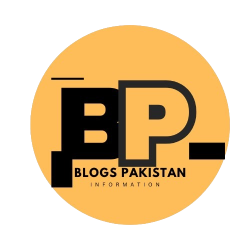Welcome to World Youth Skills Day: Time to Talk About Real-Life Superpowers!
World Youth Skills Day isn’t just a date on the calendar or a hashtag on social media—it’s a global shoutout to one of humanity’s secret weapons: practical, hands-on skills. While the world sets aside a day to celebrate, the province of Punjab is going all-in with a blockbuster Rs. 26 billion investment to turbocharge technical and vocational education. Spoiler alert: This isn’t your granddad’s trade school story.
If you’re reading this in Pakistan or India and wondering whether learning a trade, picking up a new tech skill, or acing a global job interview is worth your while—let’s just say Punjab’s got your answer, and it’s written in bold, underlined, and possibly flashing neon lights. Let’s unpack why this matters, what’s happening, and why the future belongs to skillful dreamers.
Why Skills (Not Just Degrees) Rule the World Now
In a world where robots are flipping burgers and chatbots are passing exams, having real-world, adaptable skills is more important than ever. The old “study hard, get a degree, land a government job” formula isn’t a sure bet anymore. Instead, the race is on for practical know-how—whether that’s coding, welding, digital marketing, or mastering the art of the perfect karahi.
Punjab has caught on, and is betting big on its youth—not just because it sounds good at election time, but because the economic stakes have never been higher. With 1.7 million young people entering the workforce every year in Pakistan, the pressure’s on to move from “paper CVs” to “hands-on expertise.”
Rs. 26 Billion: Not Just Pocket Change, It’s a Game-Changer
Let’s put that number into perspective. Rs. 26 billion is enough to buy thousands of new classrooms, train armies of instructors, and fund programs that open doors for women, rural communities, and even the often-overlooked transgender community. For the 2025-26 fiscal year, Punjab’s government is literally putting its money where its mouth is.
But here’s the real kicker—the creation of the Skills Development and Entrepreneurship Department (SDED). This one-stop shop has done away with the old system where every agency did its own thing (sometimes even competing for the same students!). Now, big names like the Punjab Skills Development Fund (PSDF), TEVTA, PVTC, PSDA, and PBTE work together under one strategic umbrella. The result? Less bureaucracy, more real-world results.
Meet the Flagship Programs: Skills for All, Not Just the Few
Punjab’s new skills agenda isn’t just for engineers and IT whizzes in Lahore. The programs are designed to reach the farthest corners and most marginalized members of society:
1. PSDF | Tabeer: Flying High, Earning Abroad
This Rs. 2.7 billion initiative focuses on international job placements. Over 2,500 young Pakistanis are being trained for high-value roles overseas—because why not aim for global paychecks?
2. PSDF | Mein Digital: Rural Women Go High-Tech
Rs. 1 billion is being invested to empower 3,000 educated rural women with IT skills. Suddenly, “work from home” isn’t just for city slickers. These women are coding, designing, and freelancing their way to financial independence.
3. PSDF | Pehchan: Skill Development for Transgender Pakistanis
With Rs. 870 million dedicated to training 2,250 transgender individuals, Punjab is setting a new benchmark for inclusion. Skills, dignity, and economic empowerment—now that’s what you call breaking barriers.
A Quick Snapshot: Punjab’s Skills Surge in Numbers
- 600,000 graduates from PSDF programs since inception44% women—because gender equity isn’t just a slogan
- 250 trades covered, from hospitality to high-tech
- 3,000+ technical and vocational institutes in Pakistan
- 455,000 students enrolled (but with a 1.7 million annual demand, there’s room to grow)
Why This Matters for Pakistan (and Yes, India Too)
Let’s face it, both Pakistan and India are facing a youth tsunami. That’s fantastic—if those young people are skilled, employed, and empowered. If not, it’s a recipe for frustration and missed potential. Punjab’s “one-window” skills strategy means less time lost in paperwork and more time getting young people trained, certified, and working—locally or even overseas.
For the first time, every aspect of skills development—policy, funding, standards, training, and placement—sits under a single roof, making it faster and easier for a young person to go from “I want to learn” to “I’ve landed a great job.”
What Makes the New Approach So Powerful?
1. Speed and Coherence:
No more running from office to office for approvals—training and job placement can happen quickly, with coordinated oversight.
2. Accountability:
When things go wrong (or right), there’s one department to answer—not ten, each blaming the other for delays.
3. Global Focus:
It’s not just about finding a job in Lahore or Faisalabad. Punjab is prepping its youth for opportunities in the Gulf, Europe, and beyond, bringing in precious foreign exchange for the country.
4. Inclusion:
Women, rural youth, and the transgender community are not afterthoughts—they are front and center in program design.
From “Potential” to “Prosperity”
Adnan Afzal Chattha, chairperson of the CM Punjab Task Force for Skills Development, put it best: “Our young people are not just our future. They are our greatest present-day asset.” The mission? Pair world-class training with global certifications and connect graduates to jobs—at home and abroad. That’s not just good for individuals or families—it’s a direct shot in the arm for Pakistan’s economy and balance of payments.
Challenges Still Ahead (Let’s Keep It Real)
While the numbers are impressive, the scale of the challenge is massive. There’s still a huge gap between the number of technical seats available and the millions entering the workforce each year. But scalable, outcome-based models like PSDF’s are showing what’s possible.
The real test? Ensuring that every rupee is turned into a real job, a real paycheck, and a real step forward for Pakistan’s youth. If Punjab can keep the focus on results and keep innovating, the rest of South Asia just might start taking notes.
Takeaway: Skills Are the New Currency—Time to Cash In!
So, next time someone tells you skills don’t matter, point them to Punjab’s Rs. 26 billion bet on its young people. Whether you’re a student, a parent, or a policymaker in Pakistan or India, the message is clear: Invest in skills, invest in the future.
And who knows? With the right training, maybe you’ll be building the next tech unicorn, designing the world’s coolest app, or just fixing the Wi-Fi when the neighbors call. Either way, you’ll be ready.










